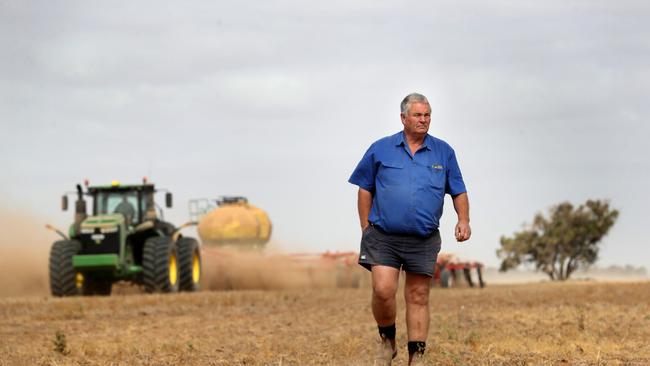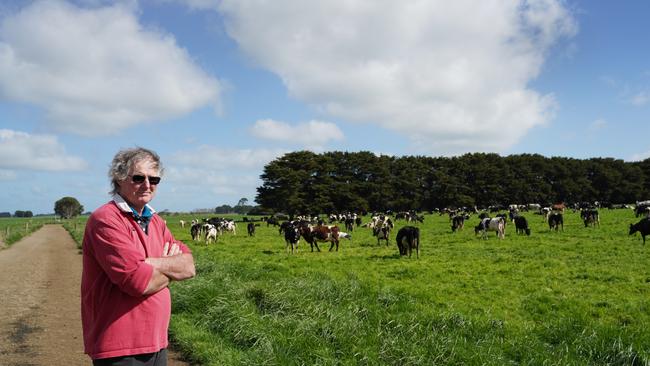Farmers crunch the numbers on the past financial year
The financial year saw a decline in return for farmers across a range of industries, but the fundamentals for livestock remained strong.
Farmers have their hopes pinned on rallying commodity prices after a tough 2023-24 during which some farmgate returns were slashed by more than 30 per cent.
Dairy, crop, beef and sheep producers, as well as horticulture growers, all reported a decline in returns during the financial year, which ended on Sunday, while juggling higher input prices and interest rates, inflation and a varied season.
An analysis by The Weekly Times shows:
CATTLE prices took a significant hit during 2023-24 with the benchmark Eastern Young Cattle Indicator averaging 32 per cent cheaper at 552c/kg carcass weight having dropped below 350c/kg last October. On Monday the EYCI was trading at 591c/kg.
LAMB prices were also cheaper with the national trade lamb indicator averaging 580c/kg carcass weight for the year, down from 729c/kg average on 2022-23. However, in a sign of hope the indicator is currently rallying at 244.57c/kg more than it was this time last year to settle at 771.16c/kg.
THE wool market was stagnant during 2023-24, finishing the year within 10c/kg of where it started. The Eastern Market Indicator closed the year at 1152c/kg, down from 1162c/kg in July 2023. While the EMI spiked at 1213c/kg in January, it has been on the decline since.
Episode3 director and analyst Matt Dalgleish said the disruption to livestock prices late last year, driven by the forecast for a dry season, had been followed by “mixed-bag” prices since.
“The sell-off was difficult for producers around the country and the live export decision (to phase out live sheep exports by 2028) has damaged the market in the west further,” Mr Dalgleish said.
Looking ahead, Mr Dalgleish said the fundamentals for livestock were “quite” positive for the remainder of this year with strong demand for beef and sheepmeat from the US.
Australian beef exports from January to May this year at 495,000 tonnes – 25 per cent above the five-year average of 395,000 tonnes for that period – while sheepmeat exports hit 254,000 tonnes or 39 per cent above the five-year average of 183,000 tonnes.
While the Australian Bureau of Agricultural and Resource Economics is forecasting a 13 per cent decline in agricultural production value to $71.6 billion this financial year, National Farmers’ Federation president David Jochinke said the outlook for agriculture was still strong despite seasonal challenges in parts of western Victoria, South Australia, Western Australia and Tasmania.
“Overall prices are looking extremely positive for a lot of sectors after a tough 12 months or so,” Mr Jochinke said.
“We haven’t seen a massive fallout in dairy prices or red meat prices and grains have held themselves pretty much the whole way through.
“The cost of hay and other inputs are still at the higher end of the scale and we are going through some pretty challenging production issues at the moment. It is cold and dry in a lot of areas.
“But there is a lot of good subsoil moisture out there. We just need to get through this pinch.”
Despite a bumpy ride for beef cattle in the past financial year, Mortlake livestock producer David Allen doesn’t expect negative market pressure to continue, predicting that the cattle market will rebound in the next 12 months due to overseas demand.
“We are seeing strong market signals from China, Japan and Korea,” he said.
“I think it is going to continue to be slow going with not a lot of bounce for mutton and wool.”
On the cropping front, wheat prices have remained relatively unchanged, averaging $377 a tonne delivered to Melbourne compared to $395 a tonne this time last year.
Victorian Farmers Federation grains group president and Berriwillock farmer Craig Henderson
said a positive for the year ahead was input prices for chemical and fertiliser had stabilised from the dizzy heights of 2022 when urea was making $1000 a tonne.

On the dairy front, producers received $9.50-$10 per kilogram of milk solids during 2023-24, roughly on with the previous season, but prices are set to decline 20-30 per cent in 2024-25 to between $7.80 and $8.30/kg.
United Dairyfarmers of Victoria president Bernie Free said the 2024-25 financial year was set to be one of the toughest since the clawback fallout after a string of successful seasons.

Shepparton dairy farmer Jayke Fisher said many young primary producers such as himself would consider their options if farmgate prices didn’t improve from a poor start.
“There’s not many industries where you rock up to work and someone cuts your pay by 10 to 20 per cent,” Mr Fisher said.
Inflation and interest rates were still a concern for many.
Mr Dalgleish said until inflation gets below 3 per cent, there is a chance interest rates will go up again.
“Interest rates have had a big increase on the previous 10 years, but this is a return to normal. The cash rate is still below the 20-year average,” Mr Dalgleish said.



